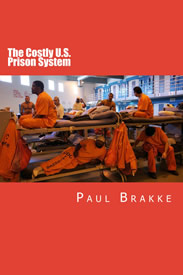Today America is suffering from a drug crisis that has claimed hundreds of thousands of lives, affected millions more, and cost the economy many billions for the costs of interception, incarceration, medical treatment, and lost wages.
The worst of the problem is due to opioids, including prescription pain killers, heroin, and synthetic derivatives of fentanyl.

The huge number of deaths due to drugs, as well as the high costs to the economy, certainly indicate the need to take action, including increased penalties. The President has even recently proposed the death penalty for dealing large quantities of drugs. Liberals are outraged by this proposal, but the President rightly points out that individual drug dealers are responsible for hundreds of overdose deaths, and we routinely demand the death penalty for mass homicides. The death penalty might well be a fit punishment, and possibly even a deterrent for future drug barons.
The High Cost of Drugs to Victims and the Economy
Before considering the remedies for drug addiction and the punishments for drug dealing, let’s look at the stats showing the high costs for both drug victims and the economy.
While liberals may propose just getting rid of the war on drugs and taxing drugs, they fail to look at the other side of the equation which involves holding the dealers complicit in the death of millions of victims of overdoses and addiction. They also ignore the high costs due to the many repercussions of drug use, including medical expenses, damages, and property losses from crimes committed by addicts to get money for drugs, and lost productivity.
So now let’s consider these ravages to the economy.
– Over 50,000 Americans died of drug overdoses in 2015, over 33,000 from using opioids. Total drug overdoses soared to over 64,000 in 2016. While opioids are legal when prescribed by a physician for a patient suffering from a serious illness or injury, the vast majority of victims have abused these drugs or obtained them illegally.
– The opioid crisis costs the U.S. economy $504 billion, according to a report from the Council of Economic Advisers, an agency under the Executive Office of the President. This includes the cost of treating overdoses, abuse, lost productivity, and costs incurred by the criminal justice system from the police, prosecutors, judges, and others involved in finding and arresting those involved in drugs, processing these cases and incarcerating those convicted.
Aside from the financial costs, other costs include the spread of HIV/AIDS and Hepatitis C, deaths from overdose, effects on unborn children, crime, unemployment, domestic abuse, divorce, and homelessness.
Heroin use is increasing, so that 600,000 people use it regularly.
There is a relationship between age, sex and race. Nearly 40% of drug overdoses occur for those between the ages of 30 and 39. Because so many died young, in the past two years this has resulted tragically in the first decline in life expectancy in the U.S. Males and African Americans have higher rates of drug overdoses than others.
Data obtained from health agencies shows the ravages of the drug overdose epidemic, which is estimated to be even worse in 2017 than in 2016. Drug overdoses have become the leading cause of death among Americans under 50.
The opioid addiction crisis has become even more deadly as a result of an increase in illicitly manufactured fentanyl and similar drugs. Most of the time, fentanyl is sold on the street as heroin, or drug traffickers use it to make inexpensive counterfeit prescription opioids
Because of the strength of fentanyl and its derivatives, the overdoses can be so severe, according to first responders, that giving victims multiple doses of naloxone, the anti-overdose medication sometimes called Narcan, doesn’t work well anymore. Sometimes responders dose overdose victims with 12 to 14 or more hits of Narcan with no effect.
Currently, over 2 million Americans are at risk of dying from an overdose or addiction, since they are estimated to be dependent on opioids, including heroin. These Americans come from all walks of life. For instance, in Deerfield Township near Akron, Ohio, the Narcotics Anonymous meetings include lawyers, accountants, and young adults and teenagers from middle-class parents.
In short, the drug crisis in America is very real, with millions of victims, including hundreds of thousands of deaths, and billions of dollars in costs. Those who are producing and selling these drugs are the main perpetrators of this crisis. Drug dealers are not just responsible for the victims of overdoses or addictions, and the huge illicit profits from drug sales, but the high criminal justice costs in dealing with these cases, depending on how high up you go on the drug sales chain.
What to Do About the High Costs to Victims and Society
So why shouldn’t such drug manufacturers, distributors, and sellers be penalized accordingly, and the more serious offenders be subject to the death penalty? Many others researching and writing about the drug crisis haven’t considered the problem in these terms, when they instead talk about drug addiction being a diseases, discussing rehabilitation efforts, or dismantling the drug war because it has been so ineffective. These researchers and writers haven’t thought in terms of viewing the bigger sellers as killers and upping the penalties accordingly. They should.
To this end, in the next articles in this series on dealing with the opioid crisis I will assess the merits of increasing the penalties, including the death penalty, for the worst criminals in the drug trade. I want to consider how we can learn from other countries that have implemented the death penalty successfully – Singapore and China, both of which have been cited by the President – to consider using the death penalty here in the U.S. to reduce the opioid crisis. These two articles will make the case in favor of this use of the death penalty.
#americanleadership #deathpenalty #capitolpunishment #drugtrafficking #opioidcrisis




